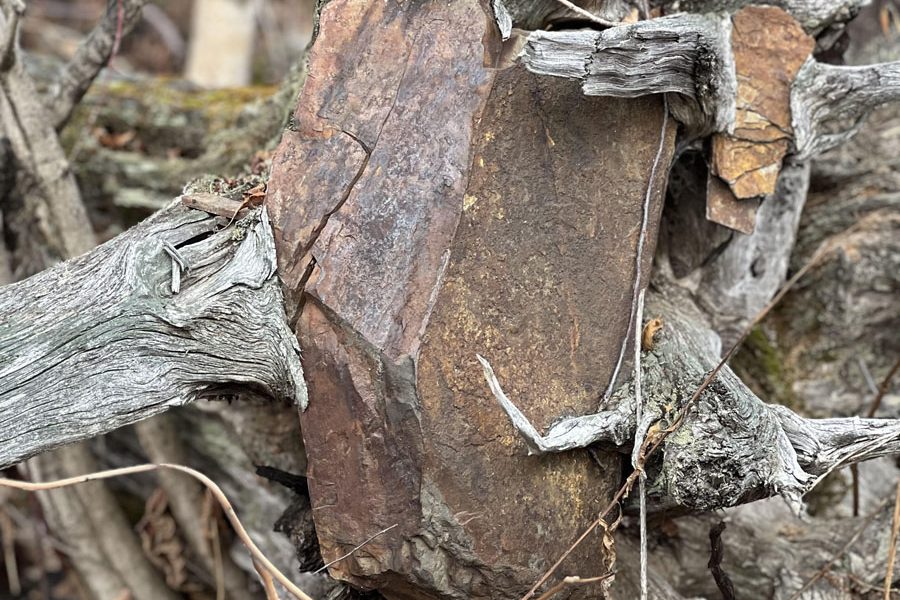Trail Time
It’s a quiet day on the Gunflint Trail. The clouds are sitting low in the sky. The lake barely has a ripple on it and there’s a thin sheet of ice in the sheltered bays. The ice remains all day now in the areas where the sun will not shine until sometime after December 21, when our spot on the earth tilts back from the cold void of dark space toward the warmth of our sun. It’s not a popular time for visitors to our neck of the woods, but if you’re made a certain way (as I am) this gray season can be full of rich and sometimes strange beauty. Some of that you will have to hunt for but some beauty will find you and surprise you every time if you’re open to it. How do I know this? Because I am surprised every day that I walk in the Northwoods. A walk alone in a quiet forest can bring beauty, surprises and amazing solace to an uneasy soul.
I was asked several times this fall — from those who live south of us — “are all the colors gone?” Each time I had to laugh inside, because of course not all the colors are gone. Yes, the red and yellow leaves have fallen. Last week’s giant wind took care of almost all of the late hangers-on. But look, right over there are the varied greens of the mosses, the polypody and the small balsams that grow like weeds looking like tiny perfect Christmas trees. The golds and russets of the dead ferns are particularly lovely, especially on an overcast day, when they glow in the dark woods. Even now, after frost has visited several times, a tiny orange mushroom will appear, glowing like a sun in a faraway galaxy. From a distance, the thin dark reddish twigs on the ends of the birch trees form a kind of lavender haze, as do the alders. Some tamaracks are still holding onto their yellow needles. By a favorite river, the combination of golden grasses, deep dark waters, and white birches against the dark green spruces create a subtle symphony of tones.
And we know this will change. Winter approacheth, for one thing. The forest is always changing and yet remains the same. It is both surprising and predictable. When Lars and I built our cabin, someone asked if we really needed insurance, because of it ever burnt down, we wouldn’t want to live here, right? Because all the trees would be burnt, too, right? Until that moment, I had never thought of it, but, yes, I decided, I would still want to live here. Because the forest will come back after it burns. Regrowth will happen and, in fact, I can help it happen more quickly by thoughtful planting. Where I live on the Trail was hit hard by the 1999 blowdown and I can sit at my table and still see the effects of the Ham Lake fire in the not-too-far distance. Evidence of former destruction is everywhere, like the blackened tree I found up the cliff behind our place that had most likely been hit by lightening.
What I love about the boreal woods doesn’t depend on a certain tree being here or a certain color being there. Although I would cry real tears if that gorgeous white pine that grows between me and the lake were to topple over. There’s a permanence in the middle of this ever-changing biome. It’s special here. Is it the water? Is it the rocks? Could it be because of geology?
Maybe the trees know something we don’t. There is a big white pine — I walk by it nearly every day — when it was small, it grabbed onto a big hunk of the iron-rich rock that is found around here. Fast forward fifty years or so when the wind blew that tree over and it fell, hard, and it gripped onto that rock and now, twenty-five years later, that tree is still holding on. Like I hold onto the woods, and the lakes; the hills and the pines; the birches and the hazels; the moose, the wolf and the bear. The beaver and the otter; the raven and the eagle; the fish and the fox. I’ll never let go.
— Marcia Roepke











